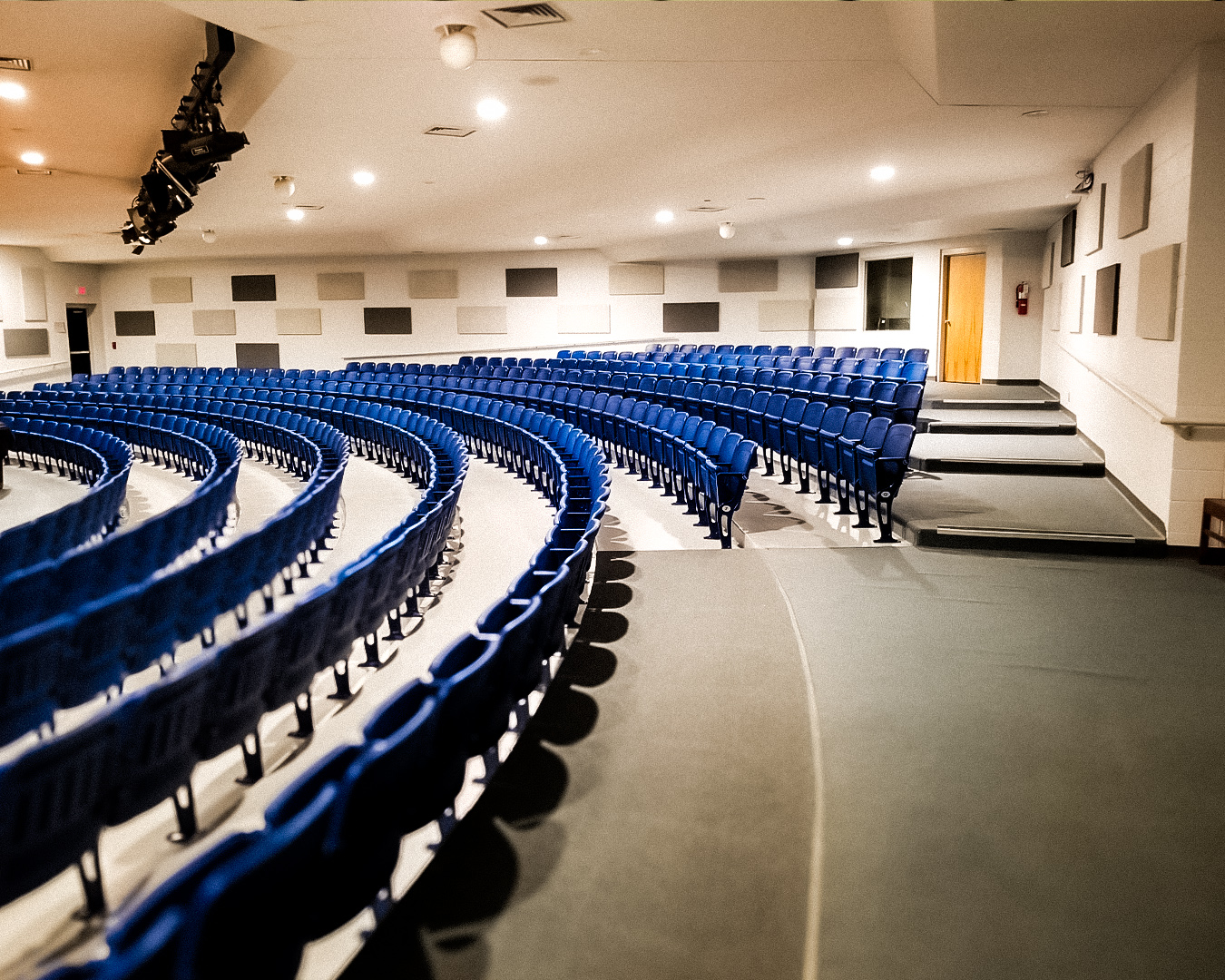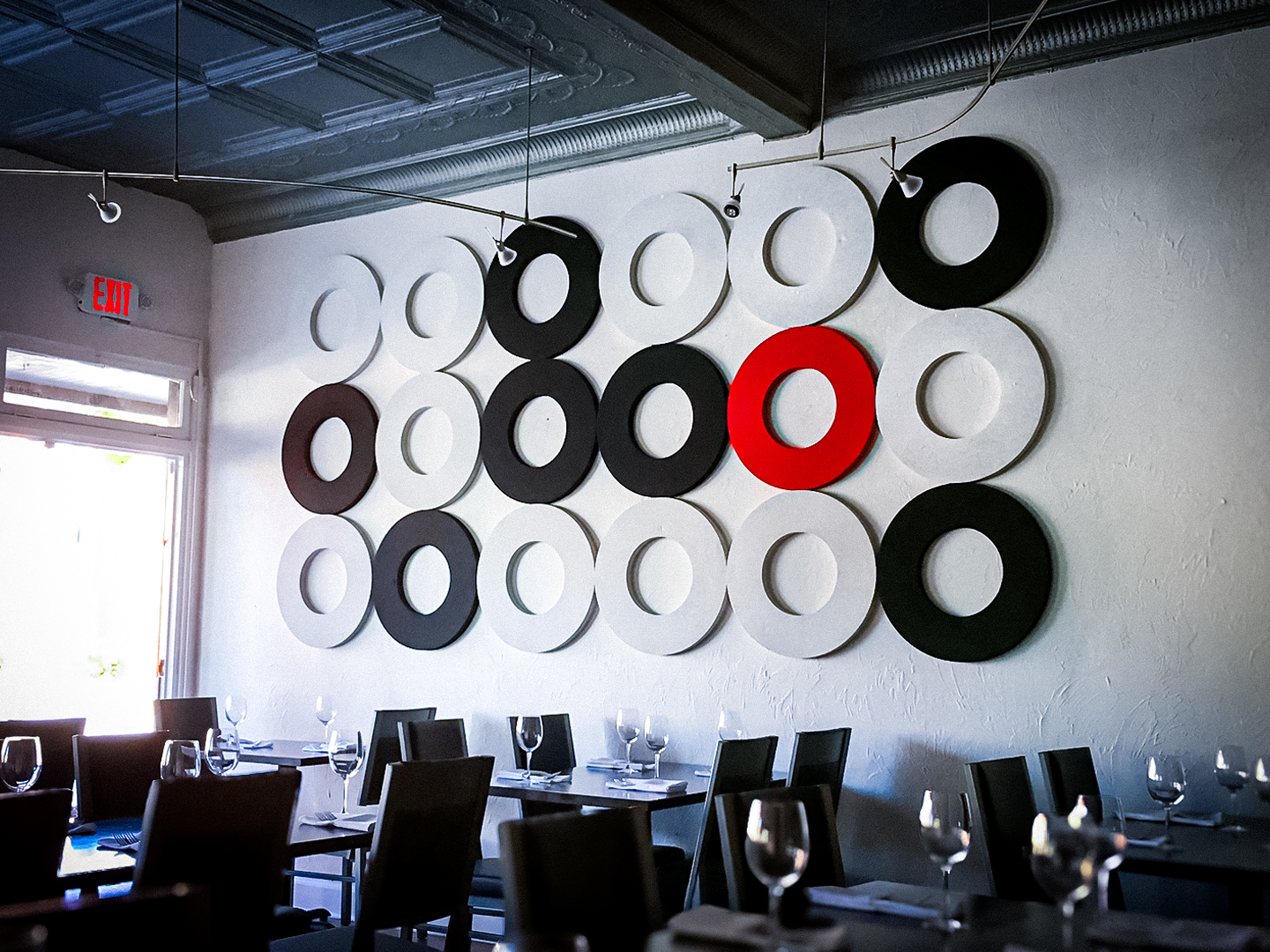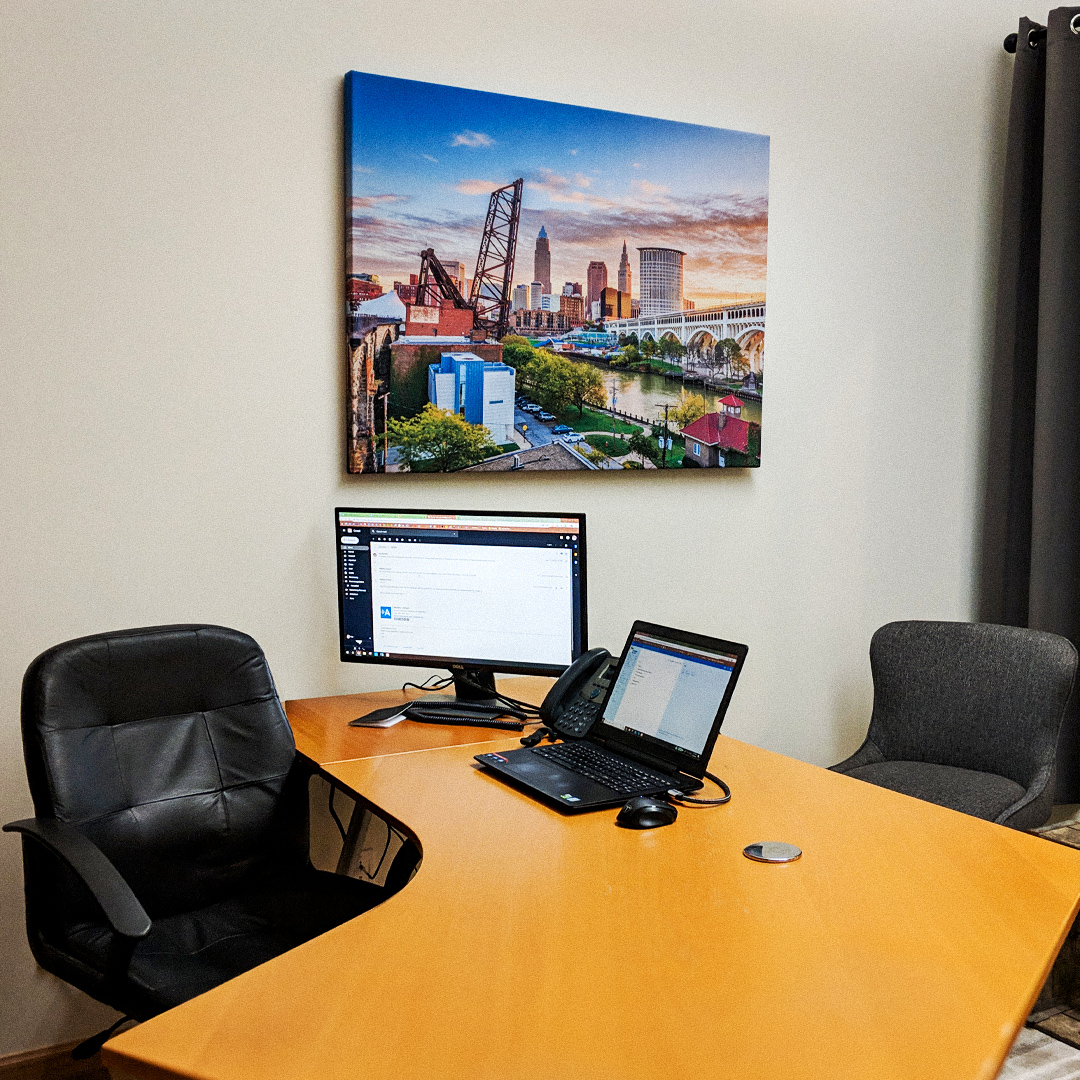Ceiling Acoustic Panels: A Guide
- Sep 12, 2025
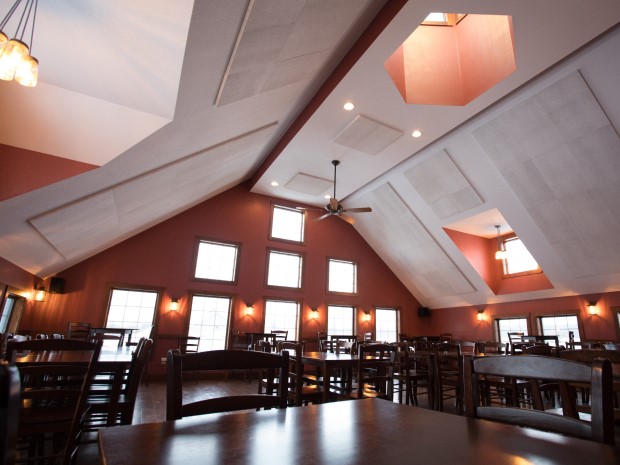
We tend to think of acoustic panels as being wall applications: pick out a panel, hang it up on a wall, let it do its thing. And in most cases, due to such factors as points of reflection and ease of installation, they are.
But acoustic panels for ceilings are also an effective option, especially for spaces with limited availability on walls (such as gymnasiums, open floor offices, or hallways) or with vaulted ceilings.
Here's a guide to ceiling acoustic panels and how they can help your sound issues.
Types of Ceiling Acoustic Panels:
1. Direct Mount Tiles and Panels
Direct mount acoustic ceiling tiles and panels are flush-mounted directly to a ceiling to absorb sound waves coming from below. Since the products are attached directly to the ceiling, they take up less vertical space or headroom than other ceiling applications. Different tools or products can be used to affix the tile to the ceiling. Here at Audimute, we prefer Titebond® Acoustic Ceiling Tile Adhesive or a Paslode® Brad Nailer for drywall ceiling applications.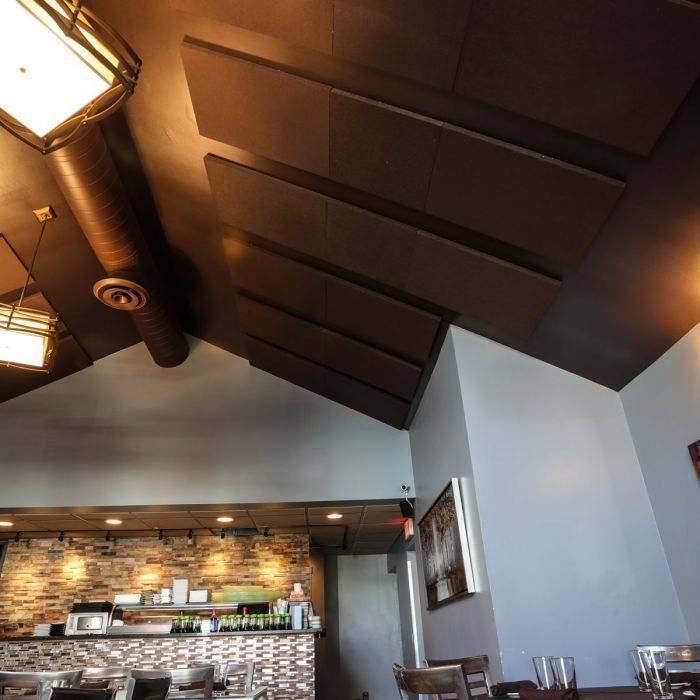
2. Drop Ceiling Tiles
Drop ceiling tiles are placed between the tracks or grid of a suspended ceiling. When installed properly, the acoustic tile or panel will lay flat against the ceiling grid to then absorb sound waves coming from below.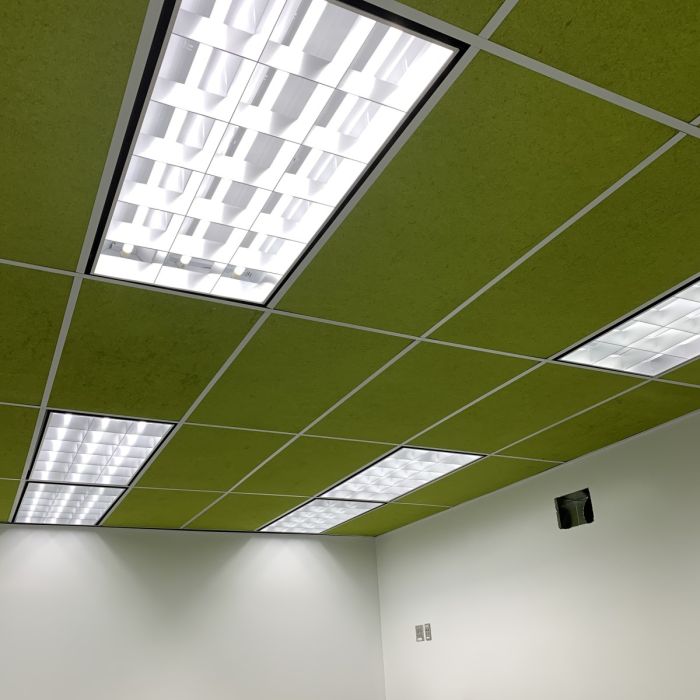
3. Clouds
Acoustic ceiling clouds are panels hung horizontally from a ceiling (with an air gap in between) to absorb sound waves at two points: as sound waves travel toward the ceiling and then as they bounce off the ceiling and travel back toward the floor. Installation of acoustic ceiling clouds traditionally involves the use of cable hangers, hanging cords, and mounted ceiling hooks.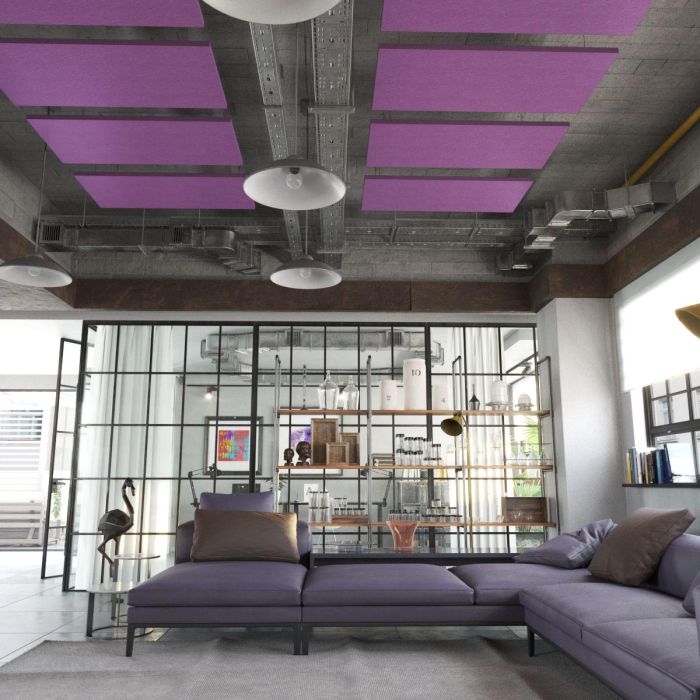
4. Baffles
Acoustic ceiling baffles are similar to acoustic ceiling clouds, but instead of a horizontal orientation, they are hung vertically from a ceiling to absorb sound on both sides of the panel. As with clouds, installation of baffles also involves the use of cords, hangers, and hooks. But unlike clouds, baffles are less likely to block lighting or air flow from above.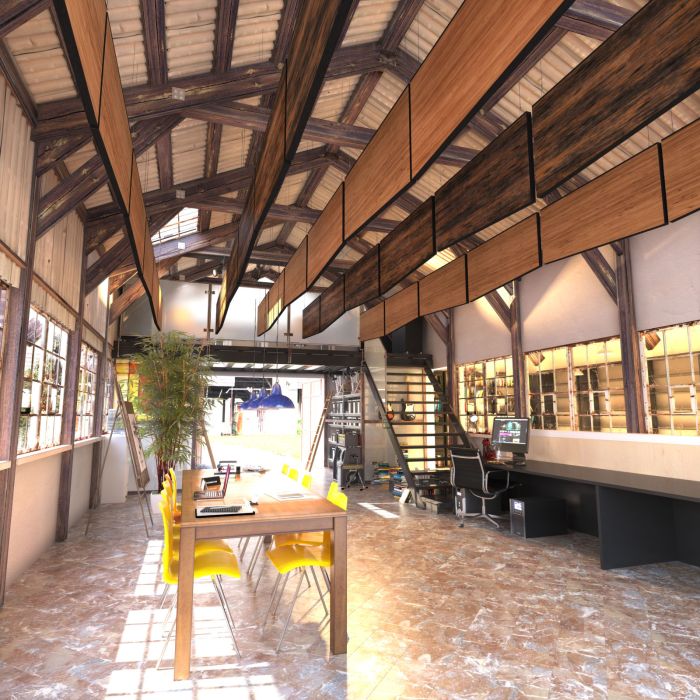
Choosing which acoustic ceiling product to use depends on multiple factors, including the layout of your space and the source of the sounds you are trying to control. But regardless of which one you choose, there are commonalities across all types.
What to Know About Ceiling Acoustic Panels:
1. As Effective as Wall Acoustic Panels
In terms of the absorption materials within them - whether it's wool, fiberglass, or Audimute's eco-C-tex® - wall acoustic panels and ceiling acoustic panels are essentially the same. How effective a ceiling panel might ultimately be compared to a wall panel really depends on how and where it's installed.
2. They Can Blend In or Stand Out
Due to not being installed at eye level, ceiling acoustic products are much easier to hide in plain sight (if that's your goal). They can be coated to blend in with the paint color of the ceiling (such as our AcoustiColor® Direct Mount Tiles) or inserted into a grid as part of a drop ceiling. But they can also be outfitted with bright colors and printed graphics to become eye-catching decor elements.
3. Installation Can Be Difficult
Obviously, installation on a ceiling is trickier than installation on a wall. Depending on the height and layout of the space, as well as such elements as HVAC units or lighting fixtures, hanging or mounting acoustic ceiling panels could require anything from a ladder to a scissor-lift. The most important thing is to practice safety at all times; consider hiring a professional to help with the installation if it might be too challenging to do on your own.
4. Upkeep Can Be Challenging
Similarly, upkeep for acoustic ceiling panels can be difficult. If they need to be repaired or touched up for any reason, be sure to practice caution at all times to ensure the safety of you and those around you.
There's no shortage of amazing ceiling acoustic panels, tiles, clouds, and baffles. So don't be afraid to go to great heights to solve your sound problems!




